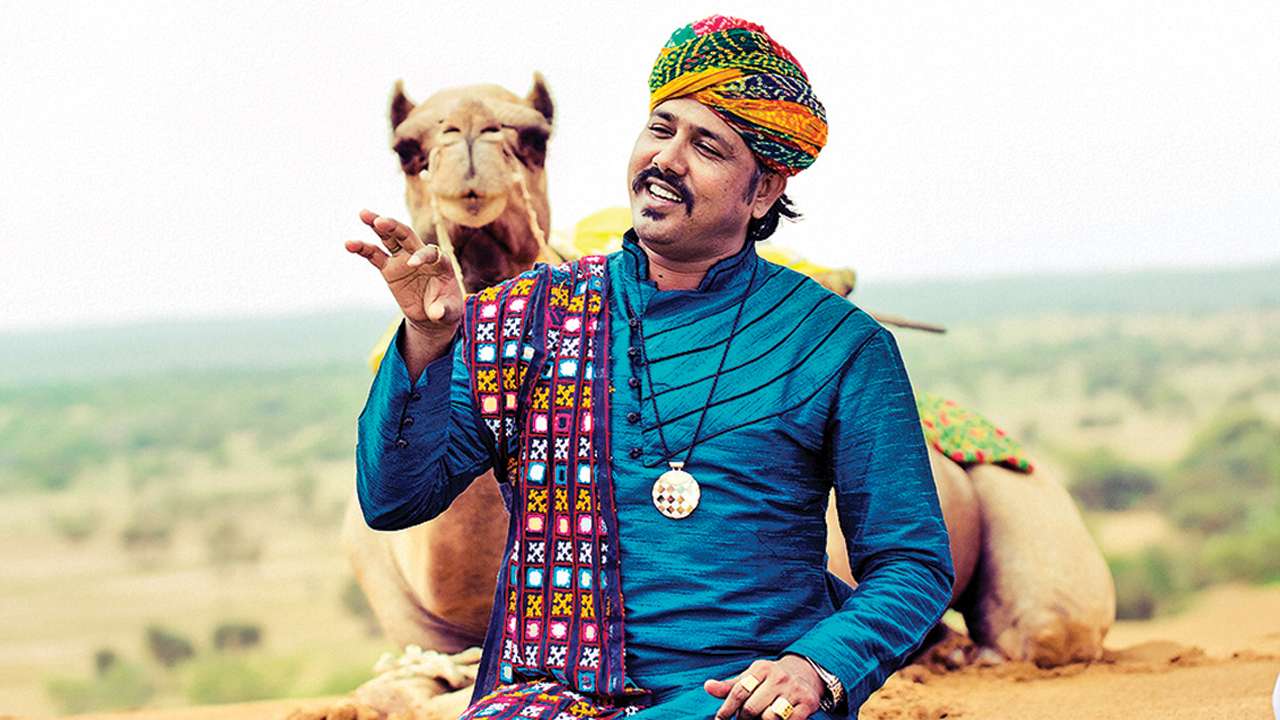
The first few notes of aalap sung by Manganiyar singer Mame Khan are enough to hold an audience in thrall. With a voice that brings images of cool desert nights and baking sands to mind, the singer, who hails from the tiny village of Satto in the Jaisalmer district of Rajasthan, has brought his school of folk music into the mainstream of Bollywood. It was Shankar Mahadevan who spotted the artiste when he was performing soulful numbers for Ila Arun's daughter's wedding, and made him an offer to sing Baawre in Luck by Chance. However, it was when the singer appeared in a Coke Studio episode helmed by Amit Trivedi in 2012 that he shot into the spotlight. Having also lent his voice to songs in No One Killed Jessica, I Am and Mirziya, Khan finds it essential to hold onto his roots in the Manganiyar tradition.
While he is the exponent of the school of music in Bollywood, the maestro says that it is his ancestors who actually deserve praise for keeping the tradition alive. "In today's world, with social media, it is much easier to find an audience. But it was my grandparents, then my father who managed to spread Manganiyar music through sheer grit," he extols.
Bollywood has made Khan a renowned name in music circles. The artiste himself, however, admits that he had never kept the Hindi film industry in mind when he started his singing career. "Many Manganiyar artistes have already made a mark in the international music scene and the new generation dreams of performing at Carnegie Hall or the Lincoln Centre (New York), or the Sydney Opera House or in lofty venues at Paris and London.
Bollywood is never on the radar," explains the musician. "But if one were to look at the sheer population of India, 90 per cent of whom listen to Bollywood music, one would soon realise that this is a largely untapped way of keeping the Manganiyar tradition alive."
Keeping his audience in mind, the singer has mixed modern music with his folk traditions. Though he steps onto the stage in his colourful turban, and kurta pajama, with a band of traditional musicians who play instruments like the harmonium, dholak and wooden kartals, one can often find a keyboard player or even guitarists in his sets. His first brush with Western music was when he sang Chaudhary in Trivedi's Coke Studio jam. With guitars, bass guitars, keyboards and western drums joining the entourage of traditional instruments, it was a new medley of sounds for Khan to get used to.
"When I first heard the Western instruments, it sounded a lot like noise. But I quite liked the finished product," he recalls. "Since then, I have started using some Western instruments in my sets, keeping the youth in mind."
Despite this infusion of global sounds, the essence of Khan's songs remain steeped in Rajasthani folk tunes. Manganiyar being a semi-classical form of folk music, there are several raagas that the singer has to familiarise himself with before he starts performing. A child from a Manganiyar household, says Khan, starts to sing even before he can speak. "Manganiyar ka bachha rota hai toh woh bhi sur mein rota hai (even when a Manganiyar child cries, he cries in tune)," says Khan. "Even the toys that are given to a child of that tradition are dholaks and harmoniums and sarangis."
Though the musician's hometown of Satto had no electricity even 20 years ago, it always had music. Each household in the village has at least one musician. "Although the mud houses have now become stone, and a few modern amenities have arrived, the essence of the village remains the same. The air is purer there, and the sound of music resonates from every household."
The price of fame, perhaps, has been the distance between the singer and the home that he speaks of with such fondness. "I do not get to immerse myself in hours of riyas (practice), as I would have before I settled in Mumbai.
However, I still try my best to practice as much as I can. It is my vow to keep the Manganiyar tradition alive, and I will do what I can to achieve that goal," says a determined Khan.